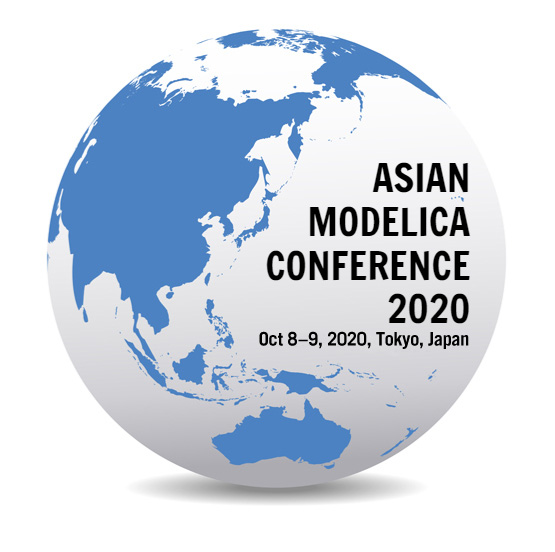
Thursday, October 8 (Japan Standard Time, UTC+9)
Start |
End |
Conference Hall |
|---|---|---|
| 9:00 | 9:30 | Registration |
| 9:30 | 9:45 | Opening |
| 9:45 | 10:45 | Keynote 1 |
| 10:45 | 11:00 | Break |
| 11:00 | 12:00 | Session 1 |
| 12:00 | 13:30 | Lunch Break |
| 13:30 | 14:30 | Session 2 |
| 14:30 | 14:45 | Break |
| 14:45 | 15:45 | Session 3 |
| 15:45 | 16:00 | Break |
| 16:00 | 17:00 | Vender Session |
| 17:00 | 17:15 | Break |
| 17:15 | 17:55 | Networking |
| 17:55 | 18:00 | Closing the 1st day |
Friday, October 9 (Japan Standard Time, UTC+9)
Start |
End |
Conference Hall |
|---|---|---|
| 9:00 | 9:30 | Registration |
| 9:30 | 10:30 | Keynote 2 |
| 10:30 | 10:45 | Break |
| 10:45 | 11:45 | Session 4 |
| 11:45 | 13:30 | Lunch Break |
| 13:30 | 14:30 | Session 5 |
| 14:30 | 14:45 | Break |
| 14:45 | 15:45 | Session 6 |
| 15:45 | 16:15 | Exhibition |
| 16:15 | 16:30 | Closing the conference |
|
|---|
|
| Smart Mobility in a Cloud-Connected World |
| Dr. James Kuffner, TRI-AD |
|
| From industrial applications to electric flight: Modelica as key enabler |
| Dr. Tobias Bellmann, Dr. Dirk Zimmer, DLR |
|
| 1. Introducing the Virtual Systems Interface for Dynamic Coupling of Continuous Time Systems with Discontinuities |
| Jeffrey Morgan and Bruno Loyer |
| 2. Timoshenko Beam based Coupled Torsion Beam Axle Modeling Method |
| Minsoo Hyun, Daeoh Kang, Seungjin Heo and Jingyu Moon |
| 3. Vehicle Dynamics Model With Non Linear Bush Model and Tire Filter for Ride Comfort Analysis |
| Jaehun Jo, Daeoh Kang, Gwangwoo Lee and Seungjin Heo |
| 4. Q&A to Session 1 |
|
| 1. Reinforcement Learning for Thermostatically Controlled Loads Control using Modelica and Python |
| Oleh Lukianykhin and Tetiana Bogodorova |
| 2. A Modelica-Based Solution for the Simulation and Optimization of Microgrids |
| Stephane Velut, Johan Andreasson, Jiri Navratil and Marcus Åberg |
| 3. Modelling and Control of Fast-Switching Solenoid Direct Injection Valves Using a New Magnetics Library |
| Julian Mühlenhoff, Emanuel Rauer and Tom Ströhla |
| 4. Q&A to Session 2 |
|
| 1. Simulating the Dynamics of a Chain Suspended Sub-sea Load Using Modified Components from the Modelica MultiBody Library |
| Savin Viswanathan and Christian Holden |
| 2. Collaborative Development and Simulation of an Aircraft Hydraulic Actuator Model |
| Clément Coïc, Johan Andreasson, Anand Pitchaikani, Johan Akesson and Hemanth Sattenapalli |
| 3. Real-Time Simulation of an Aircraft Electric Driven Environmental Control System for Virtual Testing Purposes |
| Dirk Zimmer, Niels Weber and Peter Eschenbacher |
| 4. Q&A to Session 3 |
|
| 1. AVL Solution Introduction |
| 2. Maplesoft Solution Introduction |
| 3. SCSK Solution Introduction |
| 4. Modelon Solution Introduction |
|
| 1. Dynamic Modeling and Simulation of Reformed Methanol Fuel Cell System Using Modelica |
| Xinyao Tian, Linlin Yang and Rui Gao |
| 2. Coupling of Modelica and Biochemical Simulator, SUMO, by Using C-API |
| Satomi Nishida and Takayuki Ootsuki |
| 3. Power and Temperature Prediction for Computer System Power Optimization |
| Koji Nishi, Shota Takada and Takamichi Kaneda |
| 4. Q&A to Session 4 |
|
| 1. A Health Monitoring Study of Multiple-Unit Train Braking System using Sample Identification Approach |
| Bo Wang, Yang Ji, Bohui Liu, Feng Gao, Weijun Yang and Dunwen Gan |
| 2. Relay System Model with Contact Bounce and Flexible Beam |
| Rui Gao and Ivar Torstensson |
| 3. Modeling and Simulation of SSPC based on Dymola Software and Modelica Language |
| Yufeng Wang, Yufei Tao, Qinzhou Lin and Weilin Li |
| 4. Q&A to Session 5 |
|
| 1. A Protocol-Based Verification Approach for Standard-Compliant Distributed Co-Simulation |
| Martin Krammer, Christian Kater, Clemens Schiffer and Martin Benedikt |
| 2. Towards an Open-Source Modelica Compiler in Julia |
| John Tinnerholm, Adrian Pop, Martin Sjölund, Andreas Heuermann and Karim Abdelhak |
| 3. The DLR Robots library – Using replaceable packages to simulate various serial robots |
| Tobias Bellmann, Andreas Seefried and Bernhard Thiele |
| 4. Q&A to Session 6 |